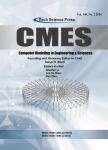An Interpretable CNN for the Segmentation of the Left Ventricle in Cardiac MRI by Real-Time Visualization
作者机构:Robotics InstituteSchool of Computer ScienceCarnegie Mellon UniversityPittsburghPA15217USA Department of Electrical&Computer EngineeringCollege of EngineeringNortheastern UniversityBostonMA02115USA Security and Optimization for Networked Globe Laboratory(SONG Lab)Embry-Riddle Aeronautical UniversityDaytona BeachFL32114USA School of Computer Science and EngineeringUniversity of Electronic Science and Technology of ChinaChengdu610054China
出 版 物:《Computer Modeling in Engineering & Sciences》 (工程与科学中的计算机建模(英文))
年 卷 期:2023年第135卷第5期
页 面:1571-1587页
核心收录:
学科分类:0831[工学-生物医学工程(可授工学、理学、医学学位)] 100207[医学-影像医学与核医学] 1002[医学-临床医学] 08[工学] 080203[工学-机械设计及理论] 1010[医学-医学技术(可授医学、理学学位)] 0802[工学-机械工程] 10[医学]
基 金:The National Natural Science Foundation of China (62176048)provided funding for this research
主 题:Interpretable graphics training visualization image segmentation left ventricle CNNs global average pooling
摘 要:The interpretability of deep learning models has emerged as a compelling area in artificial intelligence *** safety criteria for medical imaging are highly stringent,and models are required for an ***,existing convolutional neural network solutions for left ventricular segmentation are viewed in terms of inputs and ***,the interpretability of CNNs has come into the *** medical imaging data are limited,many methods to fine-tune medical imaging models that are popular in transfer models have been built using massive public Image Net datasets by the transfer learning ***,this generates many unreliable parameters and makes it difficult to generate plausible explanations from these *** this study,we trained from scratch rather than relying on transfer learning,creating a novel interpretable approach for autonomously segmenting the left ventricle with a cardiac *** enhanced GPU training system implemented interpretable global average pooling for graphics using deep *** deep learning tasks were *** included data management,neural network architecture,and *** system monitored and analyzed the gradient changes of different layers with dynamic visualizations in real-time and selected the optimal deployment *** results demonstrated that the proposed method was feasible and efficient:the Dice coefficient reached 94.48%,and the accuracy reached 99.7%.It was found that no current transfer learning models could perform comparably to the ImageNet transfer learning *** model is lightweight and more convenient to deploy on mobile devices than transfer learning models.



